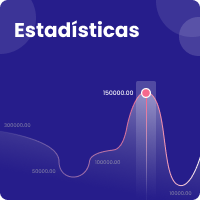Aislamiento y capacidad de osteodiferenciación de las células madre provenientes del ligamento periodontal y pulpa dental
Resumen
Introducción y objetivo: Los tejidos dentales contienen células madre mesenquimales con diversas capacidades de diferenciación. El objetivo de este estudio fue comparar la capacidad de osteodiferenciación de células madre de pulpa dental y ligamento periodontal cultivadas con diferentes medios de osteodiferenciación.
Materiales y métodos: Se obtuvieron 24 muestras de tejido pulpar y 30 de ligamento periodontal de terceros molares, se aislaron y se cultivaron con 5 condiciones diferentes de osteoinducción. La osteodiferenciación fue evaluada mediante RT-PCR y Rojo Alizarin.
Resultados: Las células aisladas fueron caracterizadas mediante citometría de flujo. Se observó una mayor expresión de Colágeno tipo I para células de pulpa dental, mientras que las células de ligamento periodontal expresaron mayores niveles de RUNX2. Las células Madre de ligamento periodontal presentaron mejor perfil de osteodiferenciación cuando fueron cultivadas en el medio 5,mientras que las células madre extraídas de la pulpa dental presentaron mejores características de osteodiferenciación en el medio de cultivo 4. La única diferencia entre estos dos medios fue la concentración de 50uM de Ácido Ascórbico para el medio 5 y 200uM de Ácido Ascórbico para el medio 4.
Conclusiones: Las células obtenidas de pulpa dental y ligamento periodontal mostraron características de células madre. La capacidad de osteodiferenciación de estas células fue dependiente de las concentraciones de los sustratos aplicados al cultivo.
Isolation and osteodifferentiation capacity of dental pulp and periodontal ligament stem cells
Introduction and objective: Dental tissues have mesenchymal stem cells with capacities to differentiate in several tissues. The aim of this research was to compare the ability of osteodifferentiation of stem cells isolated of dental pulp and periodontal ligament cultured with different media.
Materials and methods: 24 samples of pulp tissue and 30 samples of periodontal ligament were obtained of third molars. Stem cells isolated by the explant method were subjected to 5 osteodifferentiation conditions. Osteodifferentiation was evaluated by RT-PCR and Alizarin Red.
Conclusions: The cells obtained both pulp and ligament showed features of Stem Cells. The osteogenic capacity of cells was depending of the concentrations of the substrates applied.
Keywords: Stem Cells , Dental Pulp, Periodontal Ligament, osteodifferentiation
Descargas
Referencias bibliográficas
Akira S, Uematsu S, Takeuchi O 2006. Pathogen recognition and innate immunity. Cell 2006; 124:783-801
Ametaj BN, Koenig KM, Dunn SM, Yang WZ, Zebeli Q, Beauchemin KA. Backgrounding and finishing diets are associated with inflammatory responses in feedlot steers. J Anim Sci 2009; 87:1314-1320.
Ametaj BN, Zebeli Q, Summera I. Nutrition, microbiota, and endotoxin-related diseases in dairy cows. Brazilian J Anim Sci 2010; 39:433-444
Anderson SD. Endotoxic and anaphylactic-type shock in steers from intravenous injection of Escherichia coli endotoxin and ruminal absorption of endotoxin. Thesis MSc Kansas State University, Manhattan, USA, 1984.
Argiles JM, Lopez-Soriano FJ, Evans RD, Williamson DH.Interleukin-1 and lipid metabolism in the rat. Biochem J 1989; 259:673-678
Aschenbach JR, Seidler T, Ahrens F, Schrodl W, Buchholz I, Garz B, Kruger M, Gabel G. Luminal salmonella endotoxin affects epithelial and mast cell function in the proximal colon of pigs. Scand J Gastroenterol 2003; 38:719-726
Baldwin RL. Use of isolated ruminal epithelial cells in the study of rumen metabolism. J Nutr 1998;128:293-296
Barcia AM, Harris HW. Triglyceride-rich lipoproteins as agents of innate immunity. Clin Infect Dis 2005; 41:S498-S503
Bauman DE, Griinari JM. Regulation and nutritional manipulation of milk fat: low-fat milk syndrome. Livest Prod Sci 2001;70:15-29
Bertok L. Effect of bile acids on endotoxin in vitro and in vivo (physicochemical defense). Bile deficiency and endotoxin traslocation. Ann N Y Acad Sci 1998; 851:408-410
Bertok L. Bile acids in physico-chemical host defense. Pathophysiol 2004; 11: 139-45
Cetin S, Dunklebarger J, Li J, Boyle P, Ergun O, Qureshi F, Ford H, Upperman J, Watkins S, Hackam DJ. Endotoxin differentially modulates the basolateral and apical sodium/proton exchangers (NHE) in enterocytes. Surgery 2004; 136:375-383
Chin AC, Flynn AN, Fedwick JP, Buret AG. The role of caspase-3 in lipopolysaccharide–mediated disruption of intestinal tight junctions. Canadian J Physiol Pharmacol 2006; 84:1043-1050
Drewe J, Beglinger C, Fricker G.Effect of ischemia on intestinal permeability of lipolysaccharides. Eur J Clin Invest 2001; 31:138-144
Elsasser TH, Caperna TJ, Li CJ, Kahl S, Sartin JL. Critical control points in the impact of the proinflammatory immune response on growth and metabolism. J Anim Sci 2008; 86:E105-25
Emmanuel DGV, Madsen KL, Churchill TA, Dunn SM, Ametaj BN. Acidosis and lipopolyssacharide from escherichia coli 055:B5 cause hyperpermeability of rumen and colon tissues. J Dairy Sci 1997; 90:5552-5557
Emmanuel DGV, Dunn SM, Ametaj BN. Feeding high proportions of barley grain stimulates an inflammatory response in dairy cows. J Dairy Sci 2008; 91:606-614
Feingold KR, Staprans I, Memon RA, Moser AH, Shigenaga JK, Doerrler W, Dinarello CA, Grunfeld C. Endotoxin rapidly induces changes in lipid metabolism that produce hypertriglyceridemia: low doses stimulate hepatic triglyceride production while high doses inhibit clearance. J Lipid Res 1992; 33:1765-1776
Gabay C, Kushner I. Acute phase proteins and other systemic responses to inflammation. N Engl J Med 1999; 340:448-454
Gaebel G, Martens H, Suendermann M, Galfi P. The effect of diet intraruminal pH and osmolarity on sodium chloride and magnesium absortion from the temporarily isolated and washed retículo-rumen of sheep. Exp Physiol 1987; 72:501-511
Gallay P, Heumann D, LeRoy D, Barras C, Glauser MP. Mode of action of anti-lipolysaccharide-binding protein antibodies for prevention of endotoxemic shock in mice. Proc Natl Acad Sci USA 1994; 91:7922-7926
Goshal S, Witta J, Zhong W, de Villiers W, Eckhardt E. Chylomicrons promote intestinal absorption of lipopolysaccharides. J Lipid Res 2009; 50: 90-97
Goth A. Goth´s Medical pharmacology. 7 ed St Louis CB Morsby Co USA; 1974.
Graham C, Simmons NL. Functional organization of the bovine rumen epithelium. Am J Physiol Regul Integr Comp Physiol 2005; 288:R173-R181
Herrera E, Lasunción MA, Gomez-Coronado D, Aranda P, López-Luna P, Maier I. Role of lipoprotein lipase activity on lipoprotein metabolism and the fate of circulating triglycerides in pregnancy. Am J Obstet Gynecol 1988; 158:1575-1583
Hontecillas R, Wannemeulher MJ, Zimmerman DR, Hutto DL, Wilson JH, Ahn DU, Bassaganya-Riera J. Nutritional regulation of porcine bacterial-induced colitis by conjugated linoleic acid. J Nutr 2002; 132:2019-2027
Khafipour E, Krause DO, Plaizier JC. A grain-based subacute ruminal acidosis challenge causes translocation of lipopolysaccharide and triggers inflammation. J Dairy Sci 2009; 92:1060-1070
Khafipour E, Li S, Plaizier JC, Krause DO. Rumen microbiome composition determined using two nutritional models of subacute rumen acidosis. Appl Environ Microbiol 2009; 75:7115-7124
Khovidhunkit W, Kim MS, Memon RA, Shigenaga JK, Moser AH, Feingold KR, Grunfeld C. Effects of infection and inflammation on lipid and lipoprotein metabolism: Mechanisms and consequences to the host. J Lipid Res 2004; 45: 1169-1196
Kleen JL, Hooijer GA, Rehage J, Noordhuizen JP. Subacute ruminal acidosis (SARA): a review. J Vet Med A Physiol Pathol Clin Med 2003; 50:406-414
Kushner I, Gewurz H, Benson MD. C-reactive protein and the acute phase response. J Lab Clin Med 1981; 97:739-749
Lacetera N, Scalia D, Franci O, Bernabucci U, Ronchi B, Nardone A. Effects of nonesterified fatty acids on lymphocyte function in dairy heifers. J Dairy Sci 2004; 87:1012-1014
Lassman BA. Release of endotoxin from rumen bacteria and endotoxin absorption from the rumen. Thesis MSc Kansas State University. Manhattan, USA, 1980.
Li S, Khafipour E, Krause DO, Kroeker A, Rodriguez-Lecompte JC, Gozho GN, Plaizier JC. Effects of subacute ruminal acidosis challenges on fermentation and endotoxins in the rumen and hindgut of dairy cows. J Dairy Sci 2012; 95:294-303
Lopez-Soriano FJ, Williamson DH. Acute effects of endotoxin (lipopolysaccharide) on tissue lipid metabolism in the lactating rat. The role of delivery of intestinal glucose. Mol Cell Biochem 1994; 141:113-120
Martínez-Subiela S, Tecles F, Parra MD, Ceron JJ. Proteínas de Fase Aguda: Conceptos básicos y principales aplicaciones clínicas en medicina veterinaria. An Vet 2001;17:97-114
Monk JM, Hou TY,Chapkin RS. Recent advances in the field of nutritional immunology. Exp Rev Clin Immunol 2011; 7:747-749
Nagaraja TG, Bartley EE, Fina LR, Anthony HD. Relationship of rumen gram-negative bacteria and free endotoxin to lactic acidosis in cattle. J Anim Sci 1978; 47:1329-1336
National Research Council. Nutrient Requirement of Dairy Cattle 2001; 7th edition. National Academic Press Washington USA
Neal MD, Leaphart C, Levy R, Prince J, Billiar TR, Watkins S, Li J, Cetin S, Ford H, Schreiber A, Hackam DJ. Enterocyte TLR-4 mediates phagocytosis and translocation of bacteria across the intestinal barrier. J Immunol 2006; 176:3070-3079
Nocek JE. Bovine acidosis: implications on laminitis. J Dairy Sci 1997; 80:1005–1028
Nocek JE, Russell JB. Protein and energy as an integrated system: Relationship of ruminal protein and carbohydrate availability to microbial synthesis and milk production. J Dairy Sci 1988; 71:2070–2107
Pekala PH, Kawakami M, Angus CW, Lane MD, Cerami A. Selective inhibition of synthesis of enzymes for de novo fatty acid biosynthesis by an endotoxin-induced mediator from exudate cells. Proc Natl Acad Sci USA 1983; 80:3743-3747
Peyraud JL, Delagarde R. Managing variations in dairy cow nutrient supply under grazing. Animal 2013; 7 :57-67
Raboisson D, Derville M, Herman N, Cahuzac E, Sans P, Allaire G. Herd-level and territorial-level factors influencing average herd somatic cell count in France in 2005-2006. J Dairy Res 2012; 79:324-332
Rosen FS, Skarnes RC, Landy M,Shear MJ. Inactivation of endotoxin by a humoral component. III role of divalent catión and a dialyzable component. J Exp Med 1958; 108:701-711
Rusu D, Loret S, Peulen O, Mainil J, Dandrifosse G. Immunochemical, biomolecular and biochemical characterization of bovine epithelial intestinal primocultures. BMC Cell Biol 2005; 6:42
Scalia D, Lacetera N, Bernabucci U, Demeyere K, Duchateau L, Burvenich C. In vitro effects of nonesterified fatty acids on bovine neutrophils oxidative burst and viability. J Dairy Sci 2006; 89:147-154
Steiger M, Senn M, Altreuther G, Werling D, Sutter F, Kreuzer M, Langhans W. Effect of a prolonged low dose lipopolysaccharide infusión on feed intake and metabolism in heifers. J Anim Sci 1999; 77:2523-2532
Steven DH, Marshall AB. Organization of the rumen epithelium. In Physiology of digestion and metabolism in the ruminant (ed AT Phillipson), pp 80-100. Oriel Press, New Casttle-upon-tyne, UK; 1969.
Stone WC. Nutritional approaches to minimize subacute ruminal acidosis and laminitis in dairy cattle. J Dairy Sci 2004; 8:E13–E26
Sweet MJ , Hume DA. Endotoxin signal transduction in macrophages. J Leukoc Biol 1996; 60: 8-26
Waldo DR. Extent and partition of cereal grain starch digestion in ruminants. J Anim Sci 1973; 37:1062-1074
Young CR, Wittum TE, Stanker LH, Perino LJ, Griffin DD, Littledike ET. Serum haptoglobin concentrations in a population of feedlot cattle. Am J Vet Res 1996; 57:138-141
Yu PH, Wright S, Fan EH, Lun ZR, Gubisne-Harberle D. Physiological and pathological implications of semicarbazide-sensitive amine oxidase. Biochimica et Biophysica Acta (BBA) –Mol Cell Biol Lipids 2003; 1647:193-199
Zebeli Q, Ametaj BN. Relationship between rumen lipopolysaccharide and mediators of inflammatory response with milk fat production and efficiency in dairy cows. J Dairy Sci 2009; 92:3800-3809
Zebeli Q, Dunn SM, Ametaj BN. Strong associations among rumen endotoxin and acute phase proteins with plasma minerals in lactating cows fed graded amounts of concentrate. J Anim Sci 2010; 88:1545-1553
Descargas
Publicado
Cómo citar
Número
Sección
| Estadísticas de artículo | |
|---|---|
| Vistas de resúmenes | |
| Vistas de PDF | |
| Descargas de PDF | |
| Vistas de HTML | |
| Otras vistas | |



